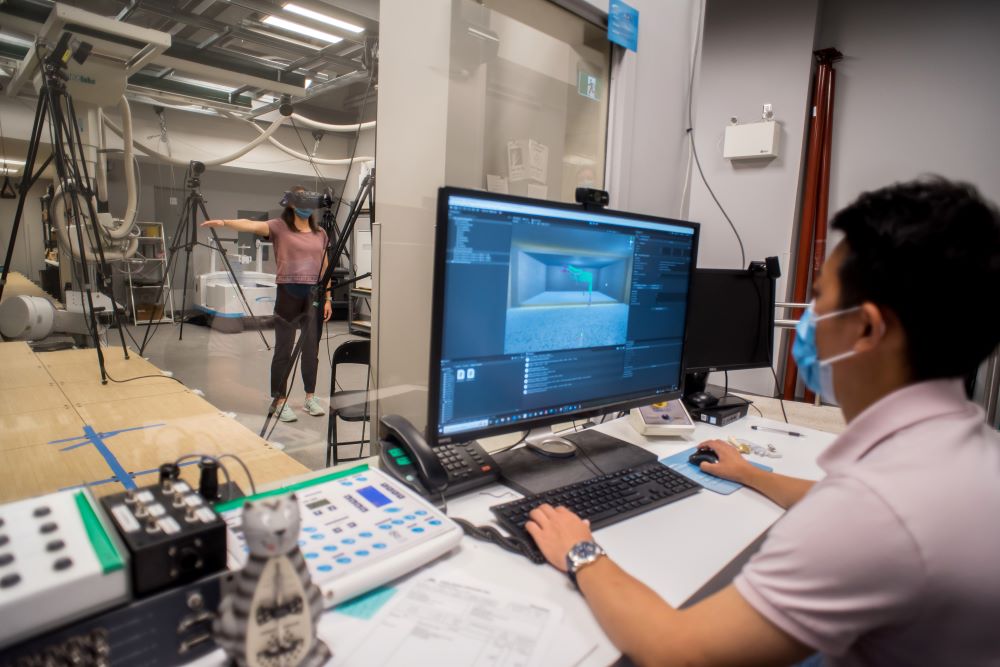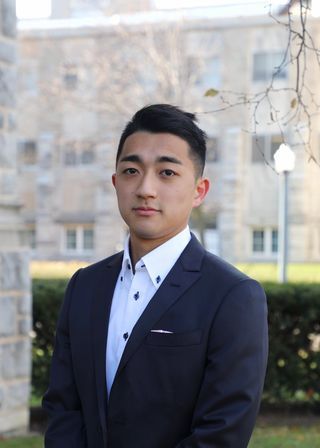When it came time to decide on internships after his third year, Kaito Lee looked into Queen’s Undergraduate Internship Program (QUIP) and in May 2022 began a 16-month term as a lab technician at the Skeletal Observation Laboratory in Smith Engineering at Queen's.
For Lee, the research-based internship was a perfect fit for his plans to attend graduate school and work in a biomedicals research lab.
“The imaging aspects of biomedical engineering is what I want to go into,” Lee says. “So looking at CT machines, MRIs and how those machines produce images, researching on how to produce better images.”
At the Smith Engineering and Technology Fair in October, Lee shared he wants to make an impact on people’s lives and produce better images to help diagnose patients accurately early in their cancer diagnosis.
Everything he’s done since high school is leading toward that goal. He joined extracurricular clubs in the biomedical field. He worked as a summer student at Sunnybrook Research Institute where a team was looking at the physics behind identifying certain markers in a tissue related to breast cancer. That led to his decision to go into medical biophysics.
Queen's and QUIP have proven to be incredibly valuable in positioning Lee along his career path. Lee credits his principal investigator at the laboratory, Michael Rainbow, as a pivotal figure in this journey. Rainbow is an Associate Professor of Mechanical and Materials Engineering. “He really cares about the people in the lab, not just academically, but also outside of academics, our mental health, our well-being,” says Lee.
Lee’s engineering experience has helped him appreciate what one alumnus once told him: with a strong base of mathematics knowledge, he is only “one book away” from solving any engineering problem.

In his internship, he says the small lab offers a great balance of independent research opportunity and teamwork. He says he was given a lot of responsibility as an intern, in maintaining the hardware and ensuring software is up to date while helping master’s and PhD students and working on his own projects.
“I was surprised at how well I was able to understand certain concepts.”
He also learned from working in the lab that biomechanics isn’t just about looking at bones, but that it draws from many different fields. He has no mechanical engineering background, so Dr. Rainbow helped him understand the problems and work through them.
The internship led to his first conference in Ottawa, the North American Congress on Biomechanics, last summer. Lee met with people from across the continent and gained connections that he says will help him in grad school. It also led to an abstract that he submitted to the International Society of Biomechanics, which meets in Japan this summer. He’s currently waiting for confirmation on whether it has been accepted.
“If that gets accepted it would be a huge jump in my career because I would have abstracts submitted as an undergraduate, which is something that I believe grad school recruiters like a lot.”
Lee’s goal is to work in cancer research at a hospital such as Sunnybrook Hospital in Toronto. He also realizes he will likely need to pursue a PhD as that is a requirement in his ultimate goal, which is to operate his own lab. “It doesn’t have to be right away, but eventually I would like to have my own lab researching in the cancer field. My internship has given me a good head start.”
